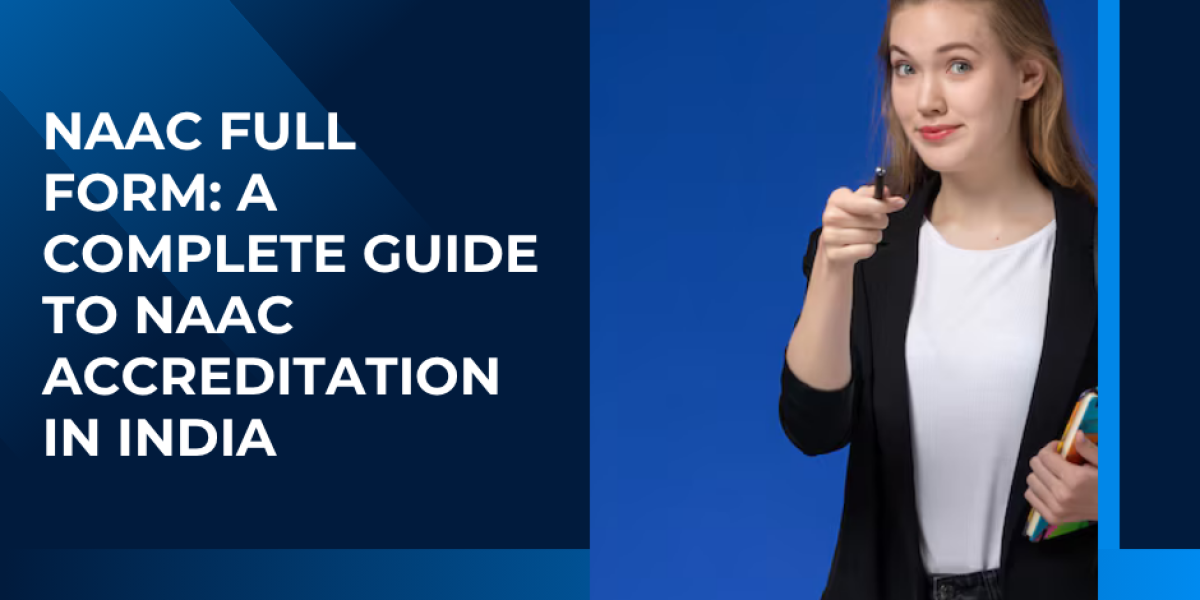Introduction
In the ever-evolving landscape of higher education in India, quality assurance has become a critical factor for institutions striving to stand out. This is where NAAC plays a pivotal role. Whether you are a student seeking admission to a reputed college, a faculty member aiming for institutional excellence, or a policymaker in the education sector, understanding NAAC full form, its objectives, and how it impacts Indian education is essential.
This blog provides a detailed look at what NAAC is, its full form, its purpose, and how it shapes the standards of higher education in India.
What is NAAC?
NAAC Full Form: National Assessment and Accreditation Council
NAAC is an autonomous institution established by the University Grants Commission (UGC) in 1994, headquartered in Bangalore, Karnataka. The council is responsible for assessing and accrediting higher education institutions (HEIs) in India. The main goal of NAAC is to evaluate the quality of education, infrastructure, teaching, research, and other academic parameters in colleges and universities.
Why NAAC Accreditation Matters
Accreditation by NAAC is considered a quality benchmark. It assures stakeholders—students, parents, employers, and the government—that the institution meets high standards of education and is committed to continuous improvement.
A NAAC-accredited institution:
-
Gains better recognition in national rankings
-
Attracts more funding from UGC and other agencies
-
Improves student admission rates
-
Increases employability of graduates
-
Enhances research and development capabilities
NAAC’s Vision and Mission
Vision
“To make quality the defining element of higher education in India through a combination of self and external quality evaluation, promotion, and sustenance initiatives.”
Mission
-
To arrange for periodic assessment and accreditation of institutions.
-
To stimulate the academic environment for promoting quality.
-
To promote measures for self-evaluation, accountability, and innovations in education.
-
To collaborate with stakeholders for quality enhancement.
NAAC Accreditation Process
The NAAC accreditation process follows a systematic and transparent approach that includes:
1. Institutional Registration
The institution first needs to register on the NAAC portal and submit an Institutional Information for Quality Assessment (IIQA).
2. Self Study Report (SSR)
The institution prepares a Self Study Report based on NAAC’s criteria. The SSR includes qualitative and quantitative metrics along with evidence.
3. Data Validation and Verification (DVV)
NAAC verifies all the submitted data to check accuracy and authenticity. This process ensures no manipulation or misinformation is presented.
4. Peer Team Visit
A team of academicians, known as the Peer Team, visits the campus. They evaluate the infrastructure, interact with stakeholders, and verify the data physically.
5. Assessment Outcome
After the visit, the Peer Team prepares a report and submits it to NAAC. Based on this, the institution receives a final grade and accreditation status.
NAAC Assessment Criteria
NAAC uses seven key criteria to assess the quality of an institution:
1. Curricular Aspects
-
Curriculum design and development
-
Academic flexibility
-
Feedback system
2. Teaching-Learning and Evaluation
-
Student enrollment and profile
-
Teaching methodologies
-
Student performance and learning outcomes
3. Research, Innovations, and Extension
-
Research publications
-
Funded projects
-
Collaborations and community services
4. Infrastructure and Learning Resources
-
Library facilities
-
ICT resources
-
Maintenance of campus infrastructure
5. Student Support and Progression
-
Scholarships and financial aid
-
Career counseling
-
Alumni engagement
6. Governance, Leadership, and Management
-
Strategic development
-
Faculty empowerment
-
Institutional values
7. Institutional Values and Best Practices
-
Environmental consciousness
-
Inclusivity
-
Ethics and transparency
NAAC Grading System
NAAC assigns grades based on the Cumulative Grade Point Average (CGPA) derived from its assessment.
| CGPA Range | Grade | Accreditation Status |
|---|---|---|
| 3.76 – 4.00 | A++ | Very High |
| 3.51 – 3.75 | A+ | Excellent |
| 3.01 – 3.50 | A | Very Good |
| 2.76 – 3.00 | B++ | Good |
| 2.51 – 2.75 | B+ | Above Average |
| 2.01 – 2.50 | B | Average |
| 1.51 – 2.00 | C | Satisfactory |
| ≤ 1.50 | D | Not Accredited |
This grading is valid for a period of 5 years. Institutions are expected to reapply for reassessment before expiry.
Types of Institutions NAAC Accredits
NAAC primarily accredits:
-
Universities (Central, State, Deemed, Private)
-
Colleges (Autonomous or Affiliated)
-
Standalone institutions offering postgraduate or professional education
It does not accredit schools or institutions that are technical (under AICTE), medical (under NMC), or law colleges under the Bar Council unless they are affiliated to a university.
NAAC vs NBA: What’s the Difference?
People often confuse NAAC with NBA (National Board of Accreditation). Here’s how they differ:
| Feature | NAAC | NBA |
|---|---|---|
| Full Form | National Assessment and Accreditation Council | National Board of Accreditation |
| Scope | Institutional level accreditation | Program-specific accreditation |
| Governing Body | UGC | AICTE |
| Evaluation Focus | Overall quality and processes | Specific programs like B.Tech, MBA |
So, while NAAC evaluates the institution as a whole, NBA focuses on individual courses and programs.
Benefits of NAAC Accreditation
For Students
-
Access to better learning environments
-
Assured quality of teaching and infrastructure
-
Enhanced value of degree in job market
For Institutions
-
Eligibility for central funding (e.g., RUSA)
-
National and international recognition
-
Attracts better faculty and collaborations
For Faculty
-
Opportunities for research grants
-
Improved academic environment
-
Better teaching resources
For the Government
-
Helps in policy planning
-
Ensures accountability and standards
-
Guides funding decisions
Recent Updates in NAAC Framework
In line with NEP 2020 (National Education Policy), NAAC has introduced several reforms:
-
Outcome-based evaluation
-
Integration of AI tools for data verification
-
Student satisfaction surveys as part of evaluation
-
Emphasis on multidisciplinary education
These changes aim to make accreditation more dynamic, inclusive, and aligned with global practices.
NAAC Accreditation in India: Current Statistics
As of 2025, more than 14,000+ institutions have registered with NAAC, and around 9,000+ colleges and universities have been accredited.
States like Maharashtra, Tamil Nadu, and Karnataka lead in the number of NAAC-accredited institutions. However, rural and smaller institutions are still catching up in terms of awareness and preparedness.
How Institutions Can Prepare for NAAC Accreditation
-
Establish an Internal Quality Assurance Cell (IQAC)
-
Collect and document evidence of academic and administrative activities
-
Regular feedback from students and stakeholders
-
Update infrastructure and teaching practices
-
Publish research and engage in social outreach
NAAC emphasizes a culture of quality—not just one-time achievements but consistent performance.
NAAC and International Collaboration
NAAC is also a member of international bodies like:
-
Asia-Pacific Quality Network (APQN)
-
International Network for Quality Assurance Agencies in Higher Education (INQAAHE)
These collaborations help NAAC adopt global best practices and raise the profile of Indian institutions internationally.
Future of NAAC in Indian Education
With the digital transformation and implementation of NEP 2020, NAAC is expected to:
-
Incorporate AI-based dashboards for real-time data analysis
-
Conduct hybrid evaluations (both physical and virtual visits)
-
Promote institutional autonomy with accountability
-
Play a role in internationalizing Indian higher education
By 2030, NAAC aims to have every HEI in India accredited, ensuring that students across all regions have access to quality education.
Conclusion
Understanding the NAAC full form and its role is essential for all stakeholders in higher education. NAAC not only certifies the quality of an institution but also encourages a spirit of continuous growth, transparency, and excellence.
For students, choosing a NAAC-accredited institution ensures better academic and career prospects. For institutions, it offers the roadmap to growth, funding, and global recognition.
If you’re part of the academic world, preparing for NAAC accreditation or understanding its significance is no longer optional—it’s essential.












